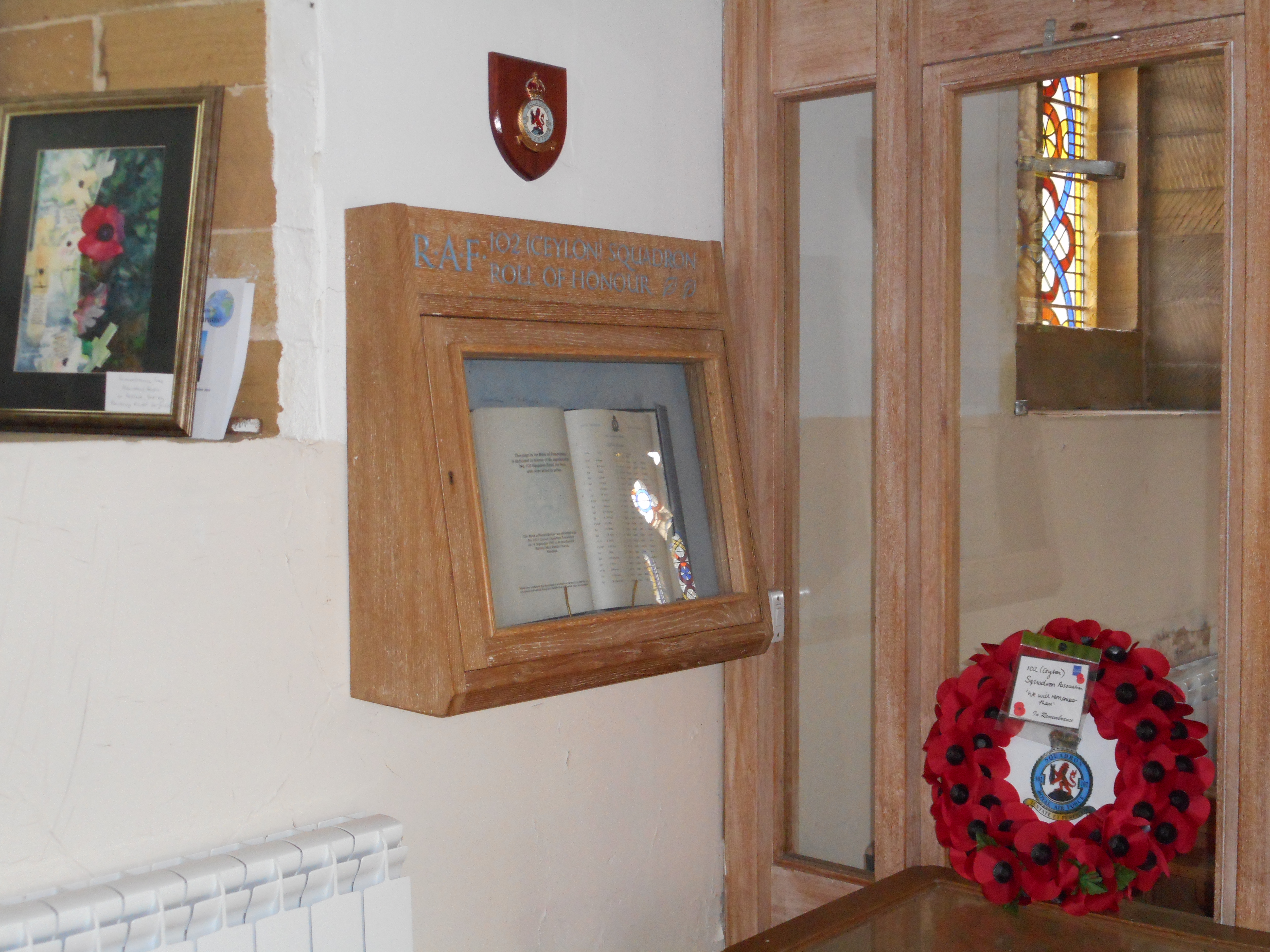Dunger, Kenneth James
Personal Information
| Rank | Sgt |
| Forename(s) | Kenneth James |
| Surname | Dunger |
| Gender | M |
| Age | 23 |
| Date of Death | 20-12-1943 |
| Next of Kin | Son of Arthur Reginald and Martha Amanda Dunger, of Gillingham, Kent. |
Aircraft Information
| Aircraft | Handley Page Halifax II |
| Serial Number | JD467 |
| Markings | DY-R |
Memorial Information
| Burial/Memorial Country | Germany |
| Burial/Memorial Place | Rheinberg War Cemetery |
| Grave Reference | 11. C. 11. |
| Epitaph | IN LOVING REMEMBRANCE. GONE BUT NOT FORGOTTEN. MUM AND DAD |
IBCC Memorial Information
| Phase | 2 |
| Panel Number | 158 |
Enlistment Information
| Service Number | 1391637 |
| Service | Royal Air Force Volunteer Reserve |
| Group | 4 |
| Squadron | 102 (Ceylon) |
| Squadron Motto | Tenate et perficite (Attempt and achieve) |
| Trade | Air Bomber |
| Country of Origin | United Kingdom |
Other Memorials
| Location | St. Catherine's Church Barmby Moor, East Yorkshire |
| Country | United Kingdom |
| Memorial Type | Roll of Honour in wall mounted wooden case, Sqn Badge above |
| Memorial Text | 102 (Ceylon) Sqn Roll of Honour and Sqn badge |
| Location | Pocklington Gliding Club, Pocklington Airfield, Easy Yorkshire |
| Country | United Kingdom |
| Memorial Type | Stylised Memorial with inscribed metal plaque |
| Memorial Text | Memorial to 102 (Ceylon) Sqn RAF and 405 (Vancouver) Sqn RCAF which served at RAF Pocklington during WW2 |
Commonwealth War Graves Commission
The National Archives
| Record of Events (Operational Record Book) AIR 27/809/24 |
| Summary of Events (Operational Record Book) AIR 27/809/23 |
Fellow Servicemen
Please note that this list gives all the losses aboard the quoted aircraft and occasionally these may have occurred on an earlier date when the aircraft was not itself lost. Please check the dates of death carefully.
Last Operation Information
| Start Date | 20-12-1943 |
| End Date | 21-12-1943 |
| Takeoff Station | Pocklington |
| Day/Night Raid | Night (39% moon) |
| Operation | Frankfurt. 650 aircraft, 41 losses (6.3%). The German controllers were able to accurately plot the route as soon as the main force left the English coast and were therefore able to deploy night-fighters at many points along its route. A diversionary raid on Mannheim failed to draw off many fighters until the main raid was over. The target was mainly cloud covered whereas the forecast had predicted clear conditions. Marking did not, therefore, go to plan. The Germans used both decoy fires and also decoy target indicator. By a twist of good fortune, considerable creepback resulted in the bombing coming back over the city. Many public and municipal buildings were hit including many schools. 23000 people were bombed out of their homes. |





